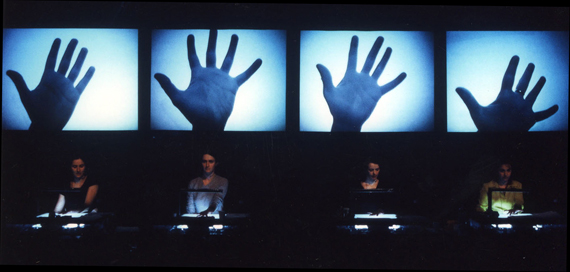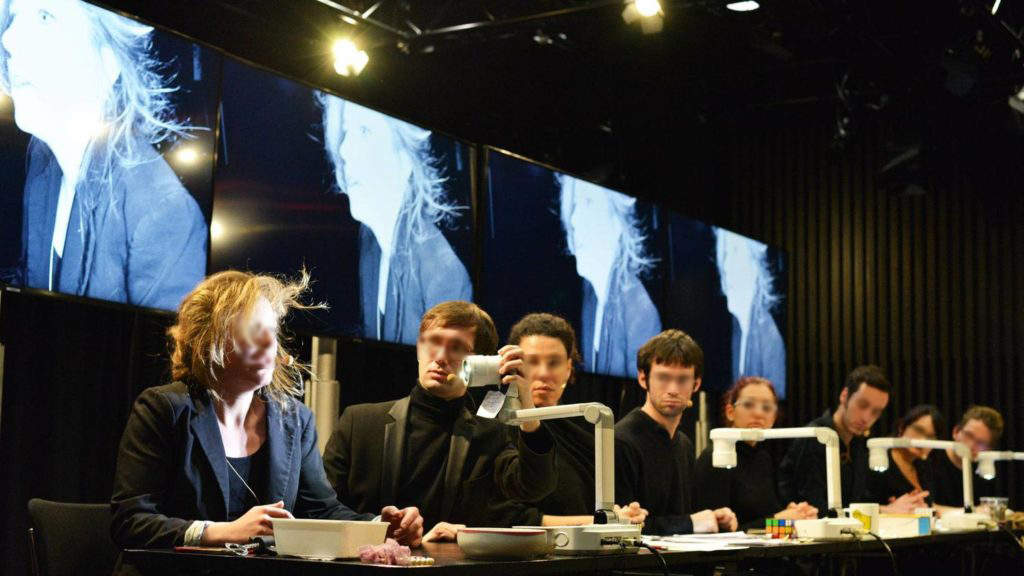04_2000 – 04_2011
+++++++++++++++++++++++++++++++++++++++++++++++++++
Machinations was comissionned by Ircam and the Kultursekretariats Nordrhein-Westfalen. It was premiered on May 6th 2000 at the Wittener Tage für neue Kammermusik. It was my first project with the institute.
François Regnault – libretto
Georges Aperghis – music
Tom Mays, Olivier Pasquet – electronics
Daniel Levy – stage design
Donatienne Michel Dansac – voice
Sylvie Sacoun – voice
Sylvie Levesque – voice
Geneviève Strosser – voice
Olivier Pasquet – voice & live electronics
Sébastien Naves – sound engineering
Emily Loizeau – stage assistant
Four women, four voices facing the audience. Each seated behind a table, we see only their heads and their hands. Above each of them, is a video screen.
Their voices pronounce phonemes, the ancestors of human speech which gradually make counterpoints and form different mixtures of “languages”.
This material has no form and sometimes organizes snatches of speech themselves affected by human frailty that rubs off on the floor: infancy, stammering, asthma, etc…
Here we have a concentration of clusters of phonemes and different ways to pronounce them. It is a concise history of the birth of language and the emotions associated with it.
Meantime these four performers will reveal objects known to have accompanied the lives of humans ever (leaves, stones, bones, parts of hands, fingers, tree bark, hair, sand, shells, seeds, feathers, etc…). These items placed on their table will be captured by a mini-video camera, and what you will see on the screens will be located on top of them.
Alongside these four women, a little further, facing them or the profile to the public, stands a man in front of his computers. He carefully scrutinizes the interplay of the four women and intervenes in its own way (handling voices, phrasing and accentuating individual parameters, rebuilding their own voices, triggering storms, rivaling in virtuosity with them). On a visual level too, he invades their screens by injecting programmatic events from his computers.
Phonemes, sound objects, and visual changes come in a musical manner that transcends them.
Besides, the show encompasses a logical and “scientific” discourse (through the voices of women or the “machine” that also speaks): some kind of traversing through times, starting with the game of dice and then, after various steps, leading to our today’s computers (via the game of the goose, etc…).
An interesting text from François Regnault is available here in French.
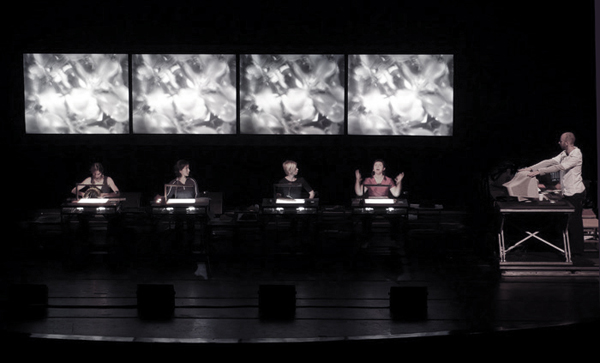
female/sayers, man/machine, objects, tables, videos (rehearsal) – © Agnès Fin
++++++ Early signs
The early name of Machinations was Face à Face à Face à Face à Machine. It was intended to be a piece for instruments and voices. Indeed, Donatienne Michel-Dansac is a soprano, Sylvie Sacoun and Geneviève Strosser both play alto, Sylvie Levesque is actress and I play live electronics. A colleague and friend of mine, Tom Mays, recorded the instruments before I arrived at Ircam. Then right after getting hired, I used and processed these recordings in a similar way I did for short phonemes. Some of these instrumental sounds can still be heard in some audio files during the piece.
The definition of phonemes is not the same as the one used by linguists. In a previous piece called Recitations, Georges Aperghis composes a kyrielle of words. The way these words are pronounced and the way they are composed create a mixture between words and sentences that can either be recognized or that are more like short sounds. These chunks are usually called phonemes for convenience. A game between literate meanings and musical abstractions is possible thanks to the prosody and the musical constraints the score gives to the reader. This is very close to what was called theatre-music during the 1920’s then more in the 1980s. Contemporary poets were dealing with the same questions but people like Georges Aperghis or others like Mauricio Kagel (with Ludvig van), Gyorgy Ligeti (with Aventures) can be more into an inside theatre where the staging is not an obligation; where music concept becomes itself theatre. Machinations differ from Recitations in the sense the show also contains a “real” theatricality with real theatrical facts such as a stage design or lightning for instance. Nevertheless, there is no concrete or assumed dramaturgy. Nevertheless, the assistant Emilie Loizeau could help thinking about the overview of the form.
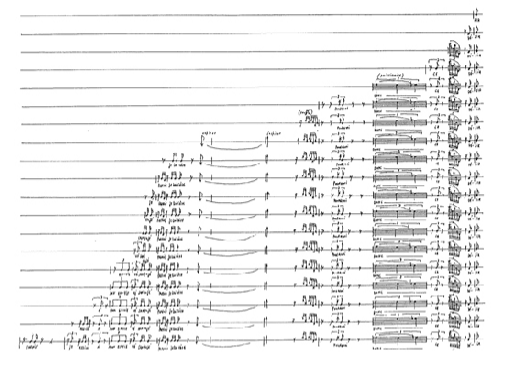 |
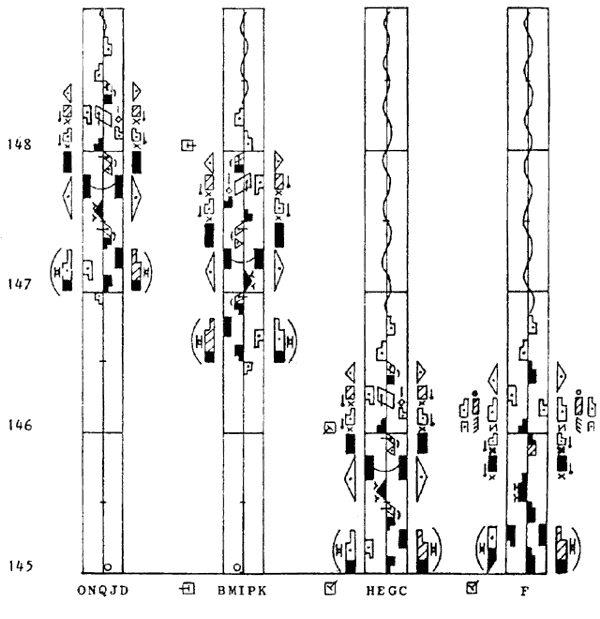 |
++++++ Score
Unlike Récitations, Machinations does not use traditional writing, there is no real score. The only score owned by the editor Durand is a succession of sentences put on four lines. It cannot be simpler: some important connections are made with lines linking words together. These links are simply moments when one word has to be said after another. That gives the rhythmical structure of the piece. Traditional writing could have then been possible, but there is no meaning in doing this: First, Aperghis did not start writing the piece this way, and because everybody involved in the show gave a contribution, it would have been complicated to integrate ideas in something already fixed from the beginning. This kind of piece has always worked like this. Secondly, the timing of the piece is constructed during rehearsals. Finally, it contains many special voice effects, not said nor sung, that would have been difficult to write. The fact a score exists is probably linked to the fact written classical contemporary music needs to have a written trace, even for copyright reasons. It is also because such a document, added to textual-audio-visual recordings, might be useful and important for remaking the piece in several years. A lack of precision in the traditional way of written music does not mean there is no precision during the performance. Simply, there is no wish to remake Machinations in the exact same manner as it used to be at the beginning. Like most theatre or dance shows, replaying the piece with another precision would be fresh and full of life. It is what Vocaallab adventurously and wonderfully did in 2009. Nevertheless, the one willing to replay the piece has to be careful with people who were involved in the previous shows and to what extent they were involved in the piece. Far beyond ego issues, that would avoid organization problems. The way places like Ircam position themselves, waste, and consider involved people like normal employees is a consequence of this recurrent problem. The composer has nothing to do with this pure institutional issue but he keeps paying the consequences without knowing it.
There is something magic about the way those kind of shows deal with time. Theatre pieces very often keep the same length from one performance to another. It is the same with dance shows that do not use a precise timeline given by music. The overall timing is given by the habits performers get during rehearsals. These habits come from some kind of writing that is done during rehearsals. They are also linked with some kind of general logic performers get when they better understand the piece, the composer, and their personal limitations. By limitations, I am talking about constraints coming from their physiology and internal rhythm. Exactly the same questions are involved with the writing of dance and important questions raised by Laban notation.
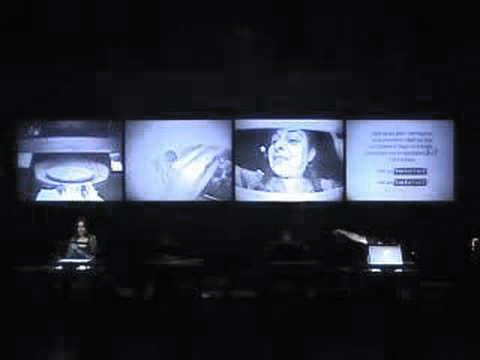 |
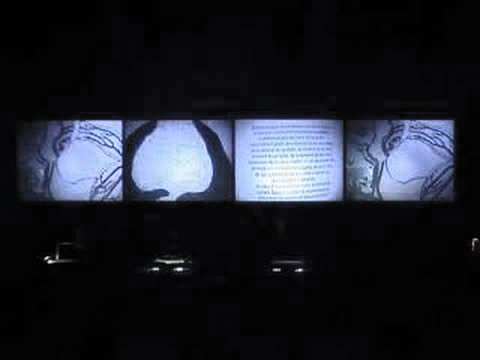 |
Poets and writers can use computational techniques to generate their work. This experimentation field was rather popular in the late 1970s and the beginning of the 1980s with the rise of computers in universities and personal computers. But using a machine is not obligatory. Algorithmic and conceptual art existed far before the dawn of calculators. There is no question to ask about that; unlike computers, the idea of an algorithm and concept is simply something to discover, invent, or build. It is a way to describe and make a creative process; an intellectual activity. That way takes two directions. The first one is the description: the way a work is analyzed. Time does not really matter since this description is done after the creative process. The second one is the process itself. It exists for a moment and it sometimes defines a period. It has always existed since questioning and organizing ideas has always been needed for any intellectual work. In other words, algorithmic art is nothing really new. It is often mixed with aesthetic questions that are the consequence of one specific algorithm or one specific concept. In this case, indeed, it is possible to distinguish types, periods, etc… I perfectly understand people who use the term “algorithmic” as a generic term for marketing reasons and for convenience. But I often hope they are aware of a historic timeline when they talk about modern art or any so-called new piece etc…
On another hand, dealing with formalization involves a notion of time. There are people who formalize and people who do not. There are movements who do some who do not depending on the subject, its complexity, its period, and to who it is dedicated. The use of computers often allows artists to go beyond what they could be doing by hand.
We cannot say Georges Aperghis uses algorithms or computers for his compositions. The way he works is also rather more empirical than formal. This fact does not stop him from collaborating with people who know about recorded and digital arts. For him, electronics is not more important than any other inspirational source or compositional factor. His collaboration with Ircam was his first experience with electronics. Georges has built his artistic personality and style without taking the digital age into account. I do not blame him about that because technology is far a necessity in the small society of instrumental contemporary music.
In a way, Machinations is talking more about science and technology than deeply using it. It is a poetic creation and not an experimental piece in terms of science or technology.
Abysses, from François Regnault
“Word and image correlate one another forever”. I often quote this sentence from Goethe that I love. We will see that it is very true with Machinations of Aperghis which I contributed to the booklet by providing some texts of the philosophical (and novelist) tradition about machines. “Word and image correlate one another forever”, as tropes and comparisons enough show it. A simple example: the trope, the metaphor of the Precious ridiculous “Quick, come in here tend Councillor graces, the girl does not understand that this is about the mirror because it is incommensurability grappling between the image of a mirror and the strange expression: “Counsellor of the Graces.”
In the case of Aperghis, I will state an even more radical incommensurability:
– Between signifier and signified. Or, between the sound and the meaning (to borrow a title from Jakobson). It is quite known the founder of linguistics, Ferdinand de Saussure, has been considering this relationship as an arbitrary link. (correcting Saussure Lacan preferred the name quota). A link is immediately required within the existing signs in any language. (Example: cheese / Käse). Aperghis is Saussurean with the fact it crosses the abyss after Saussure by inventing new musical forms of arbitrariness. Which ones? To answer this question, one must pass through the processing of phonemes. (I note that phonemes are the sounds together in a limited number which are distributed in a given language, they look sound (phonetic), but they are on them (phonological aspect). In the word “table” there are four phonemes: /T/A/B/L/ (even if there are five letters). The phoneme /r/ is different in French and in English, in French, there are no phonemes /th/in English, Japanese does not distinguish /l/ from our /r/, etc.). I think Aperghis’ phonemes are related to the French language.
– Between speech and singing: what is common between pronunciation (it was used to say “prolation”) and, pure and discrete phonemes, which imperatively contributes to the spoken language, and the slightest sung sound, which involves a continuous extension of a sound, and prefers the vowel to the consonant? (I say “hello”, it makes sense; I sing, it’s ridiculous, this is operetta!) And yes, indeed, it is believed we speak to communicate, while we sing to express a feeling, a passion, we sing in a ceremony, etc… And yet, one assumed so far that the problem was solved that “saying and singing” was once the same thing (proposal from Strabo quoted by Jean-Jacques Rousseau). Aperghis descends into that Grand Canyon gaping between the speaking voice and the singing. He revisits the tribes that inhabit it. Machinations work on these two open bites or two abysses, to the point that I have already been inspired by Baudelaire‘s poem:
“Pascal had his abyss, with him moving.
Unfortunately! everything is abysmal, – action, desire, dream, Word!…
– Between man and machine, so that Descartes excepted man from all animals that are only machines. The hypothesis of the soul guarantees this exception, not without asking the challenging issue about the union of soul and body. Aperghis, almost like the eighteenth century philosopher La Mettrie, re-examine the assumption of Man-Machine.
So when George Aperghis offered me to write a booklet (the word is here burlesque) about Machinations, I came immediately to philosophical and literary references to the machine (Heron of Alexandria, Vaucanson, Alan Turing, and until, of course, Eve future by Villiers de l’Isle-Adam, whose hero makes a woman as beautiful and as desirable as possible, and yet that is a machine. Provided from Assuming Adventurous, suggested to George that the machine was, of course, smarter, more talented, more thinking, and stronger than man. Anti-humanism primary, if you want. To this, I added games, dice, chess, goose, bridge, and others, from Lewis Carroll (croquet game).
First, the phonemes.
“These phonemes are constructed in a very systematic way: some are dominant vowels (vowels, consonants), others are predominantly consonantal. I imagined these phonemes as ancestors generating progenic lines with combinations of increasing complexity. I also thought about what Deleuze writes on the generation by the middle, rather than the end or beginning. Something like a volcano that spits and whose crater or crack spreads. And then there are diseases: there are consonants that end up eating consonants. Which sometimes admittedly ends up with a number of consonants one after another. It also creates rhythms, and pitches of voices (some are consonants so higher than others). So it ends up making melodies. And there, each groove, each mouth is doing as it may, by generating a different melody.[…] I’m trying to make these phonemes be heard as musical phrases.”
– Unicellular ancestors, mainly vowels – consonants as extensions or diseases of vowels:
ss of fe uh fn hi ho if eu nh
– Unicellular ancestors, vowels and consonants to equality:
vn in his or av ed hf lh no. iu
“I start working on the decoration of phonemes: it is like an ivy that sometimes hide another one in the tree. I try proliferating those ornaments.”
– Ornamentation-percussion:
usoa siete estan sedation tanada tadou isdi odtia duodo adisu
– Consonants independent adorn a main vowel:
afk ams axd lar val zat atr pav sab arz
– Vowels independent adorn a primary consonant
Urai riir erro reor roia ïéir ouor urru eiea aract
– Consonants independent adorn a primary consonant
Tk Tk Tk Tk etc.. Kn Kn Kn Kn etc..
Therefore I start from the questions, suggestions, and challenges Aperghis imposes himself from the very beginning of his work, and probably from all his aesthetics, and states in a text entitled “It’ll be called”.
“With Olivier Pasquet we have to program on the computer the following situation: first there is a large crowd of phonemes that are not recognized because they are filtered to let out that certain consonants, and then, gradually, the filter goes away and we discover that there are vowels again, voices change, they become more natural and they end up in the mouth of a woman whose we see that she was talking from the beginning. It’s the comings and goings that interest me.”
You see him caught passing from the “de-phonemicized” phoneme, I would say, reduced to the sound, which, as a phoneme, it is the negation (as the object is, in Frege The death of the thing) to the syllable, and thus the meaning, or meaning.
Example:
feuof füoüf ïaffo aïféf aeff fouïf éïfaf füéfé féafu...
(Sophie Daull weeping as phonemes in Nicomedes Corneille, directed by Brigitte Jaques-Wajeman: it was the understanding in the middle of the Alexandrian, the subtext of rumblings of a child who whines).
I discuss here a first question that undoubtedly embraces the whole work of Aperghis in any case where any work involves the voice. His work seems to me to be this kind of party called pars totalis – a part that is a whole (as there are as many integers as even numbers or odd numbers in the infinite set of numbers): why is it that the animal called man, who speaks sounds like many mammals also want to express meanings that are not only signals? It goes to the metaphysical abstraction.
It is found in the process that if the consonant is still beside the subject, the vowel leaves the side of the thought. We Phoenicians – I mean we have their own script, we do not always measure what a semitic language speaker must feel (Hebrew, ancient Egyptian, Arabic, etc..), This is what Louis Massignon saw as the root meaning of calcined: MLK = royalty, Melek, king, Melka, Queen, etc.. and you know we do not necessarily write the vowels. Aperghis is Greek. Does he then obey the injunction cited by Louis Massignon “Let us be spiritual Semites”, using in its musical language the principle of the consonant-consonant root of the semitic languages. Massignon said that in Arabic, the idea emerges from the matrix of the sentence, like the spark from Flint. “We know that every Arabic word is composed by a body of consonants, only written in black on the line, and a soul, their vocalization. He mentions several times “this literal calcination”, are consonants the remaining carbon after oxygen vowels dissipated? Consonant phonemes, these rollers give exactly the meaning (and make TXT think about the text) where a group of vowels, so “they are spiritual” only offers a vague meaning (ready, fly, abhor, append, etc.).
Of course, this is reversed, since everyone will also admit the opposite assumption that I am invited, after having given birth to my eyes, of the words, to hear a deformed hand, descend until noise, sound, roll up. For the phoneme, Aperghis compares to a roller that is rolled between his fingers. The end of language, in fact. Or simply listen only to the signifier and non-signified, as we do when we listen to poetry (“Rome has to ruin my hydra too fertile”, 4 r, Cornelius. “Who are these snakes whistle on your head? “, 4 s, Racine), or when the psychoanalyst Lacan grants under its supremacy to the signifier:
“It remains to confound that, unlike the whole philosophy, Freud was always interested in the slip, that is to say, phonemes slip over each other, which routed the obvious meaning and in fact suggest an another when we held them for what they called so innocently: a simple slip of the tongue! The comings and goings are obviously how signifier and signified stick to one another to form meanings, the skeleton, insured, to doubt and defeat them, and witness, and the only trauma of man is not that of the birth, which cynics believed the humanities, but to be born misunderstanding and that the misunderstanding is the essence of “communication”.
This especially evidenced music because, despite what the cynics think of music lovers, music does not have any communication between people: trance, if you want, but instead soften manners, it transgresses them or abolishes them.
////////////
Sprech oder Gesang?
I ask a second question which undoubtedly also embraces the whole work of Aperghis in any case always the work of him where the voice comes: why is it that the same animal that makes sounds like nature and produces joints with meanings as nature does not, mingles also sing like birds?
After all, the word not it enough? Why do we want also to utter something which is, dare I say, harmonious! But you know you can return the item, the reverse order, assuming that singing is closer to feelings, passions, intelligence, and concept, and had to be our first language, what does did not want to imagine that Jean-Jacques Rousseau in his Discourse on the Origin of Languages:
“The joints are few in number, the sounds are infinite; accents that mark can multiply themselves, and all the notes of music are so many accents, we have, it is true only three or four for the word, but the Chinese have much more…
All this is true. Rousseau said that even if we had kept the “first language” (fictional assumptions, in the style of the eighteenth century):
“Not only do all the tricks of this language should be in pictures [precede giant man], feelings [” Let the first inventions of speech does not need, but the passions “or” we do not begin by reasoning, but feel “it is up to imagine that the first word of the southern languages was” Love Me, “while the first language of the north was” Help me! The passions above reason, figures in [giant, figuratively precede human sense], but its mechanical part it had to meet its first subject, and present to the senses as well as the understanding the impressions almost inevitable that the passion is trying to communicate. “
One can never say enough how much drive, Saussure, Lacan and Deleuze, Aperghis is as contemporary issues such eighteenth-century origins, including that of language, but also that of music and society, let’s not forget he did, with a libretto by Catherine Clement, an opera from Tristes Tropiques, Levi-Strauss, this book, one of the greatest twentieth century that both repeats transcends all liquid and rantings about primitive man.
” As the natural inarticulate voices, Rousseau continues, the words would have little joints interposed some consonants, erasing the hiatus vowels, would suffice to make them flowable and easy to pronounce. However, the sounds are very diverse, and diversity of accents multiplies the same voice: the quantity and the rate would be new sources of combinations, so that the voices, sounds, accents, the number who are in nature, leaving little to do with joints that are convention, they sing instead of speaking, and most radical words are imitative sounds, or the emphasis of the passions, or the effect of sensible objects: onomatopoeia would feel it constantly.
I leave aside the mythical character of this fiction and the question in language that is natural and what is a convention, only to report that in research phonetic language, as are those of Aperghis found artistic form what Rousseau imagines a philosophical point of view. Music sang the opera itself as an invitation to a journey through time, as an early introduction to the language, and as revenge for the voice, sound, accent, and cons of the number signifying the articulation. At one point, in losing a sense of being sung, and all too well understanding the words articulated still bothers many bad lovers, Pelleas, who would both musk Debussy if not accompanied by the poetry of Maeterlinck! For it must hold that the “Do not touch me” Melisande at the theater, and even opera are merely homonyms. Well, it seems that through these primitive considerations, we move into the world of re-Aperghis which looks at the origins of our species (not to mention the oratorio The Origin of Species, which I learned most of the text of Darwin), and each of its phonetic and phonological investigations, the origins of our language. With the risk of falling incessantly incurred (but from an artistic perspective, it is a promotion) in the cries of animals, even the sounds of the elements, water (set to music Aperghis considerations of Leonardo da Vinci the nature of water, 1974), fire, air (breath, breathing, choking, suffocation, sighs, laughter, tears, asthma, spasm, orgasm), earth (landslides, landfills, excavations, but also germination, depth, flowering, harvest, Georgics…).
Moreover, on this issue and spoke of singing, everyone knows it arises since it is poetry, but it is coextensive XXXX in the history of opera. Admittedly, the distinction remains intact, and The Magic Flute gives us an example, well before the French operetta, this alternation obvious. Each author of Lied and opera obviously invents new solutions. The sung recitative remains close to the floor without being and stands of the aria. Wagner‘s endless melody invents a mix of speech and song that makes all of the originality. The Sprechgesang that opens with Schoenberg‘s Pierrot lunaire introduces a problem whose achievements regularly renew the aporia. Pierre Boulez has often explained that this solution of Pierrot was not satisfactory and, in contrast to the first “Fortune Teller” recorded time of Schoenberg, he went to lead a full and Pierrot lunaire exclusively sung by Yvonne Minton canceling the enrollment difference between the sung note, black or white, but enshrined in a circle, and cross-institution Schoenberg notes for “spoken-sung” in Sprechgesang. The issue has been complicated since then. Alban Berg, Die Soldaten Zimmermann, Lachenmannn, Mantovani, etc..
Thus, in Lulu, Boulez said, “writing voice is very complex and the exigences Berg render enforcement difficult. There are six modes of interpretation:
1. unaccompanied dialogue
2. free prose (accompanied)
3. rhythmic prose determined by the tails of notes and ligatures, without precise height
4. Sprechstimme determined by the height and speed (Berg refers to the explanations in Schoenberg’s Pierrot lunaire and Manpower happy)
5. half-sung
6. fully performed
Let me take another example of what beautiful opera “The Little Match Girl” by Helmut Lachenmann.
“One of the sticking points in the composition of this opera,” said Martin Kaltenecker in the program, was undoubtedly the use of the item song. Treatment “Bériot” Voice of the material in Tema could serve as a reference, or the bel canto, the full and vibrated, filled with connotations, a sort of compact object and precast, impossible to open and reactivate a deconstruction: the Song is by nature a citation, “said the composer, and so it appears for example in Wozzeck, with the lullaby of Mary. “
“To circumvent the ease of singing vibrated, Lachenmann will return to the type of voice processing encountered in Hi für Caudwell: the word broken into syllables, both slowed and chopped, the last vowel or consonant that is agglutinated next word in a new division, which briefly suspended understanding. There is certainly a risk, which is to require the viewer a continuous effort of recovery, to restore a sense of slight delay in the sound, but it is also a musicalization of the tongue, where the meaning back in the word and gives it a new flavor.
As we near Aperghis, and the adage of Lacan (psychoanalysts): “Do not rush to understand! (Do not go there not even in the plainsong melisma? Between the a and Gloria in Excelsis?)
All research around singing in contemporary music shows to the environment that virtually every composer must invent a new system by multiplying the possible instances between pure talk, which is a fantasy, and pure singing, which is an ideal or dream.
I heard, listened, and I looked too, the amazing Donatienne Michael-Dansac Vortices in a very recent piece by Georges Aperghis with a text Olivier Cadiot, “A singer finds herself alone in the suite [that of the Red House], facing his dreams and difficulties of his art. They are fitted with nine attacks and depression.
And I realized the difference between constantly marked speech and singing. Not that we blur the difference, it was instead asserted at any time since the singer (a singer’s life and she played one in the Suite) oscillated constantly between very subtle vocalizations, apparently as difficult to perform in the moment as the Queen of the Night in his two arias, and then prosaic considerations, the insignificant everyday actions, like looking for a paper in a drawer, and then a kind of dream-nightmare where he was begging a kind of late to go underground and to file the peace… However, although the phonemes were virtuosos on phonological wordless vocals, and lyrics that were flat or stammered shipped to lose their meaning, well! asserted a mismatch, a chasm, between the need to understand when it comes to the floor, and the desire for harmony, when it comes to singing. And even if the phonemes were sung to mean almost anything, but who knows what – because in the vocalizations casta diva, you modulate twenty notes on a single a or an o, you do not know what he wants say – and even if the words said were lost in the nonsense, the paths tend toward one another as word and image as Goethe did not join.
As these two tunnel diggers on each side of the sea, and coming from the other side without having met.
Shall we provide qu’Aperghis is a musician and poet – as Albert Schweitzer said Johann Sebastian Bach? Of course, in Machinations, he also inserted the texts in addition to those that I have used. And certainly, their meanings, often fantastical (childbirth, pregnancy, suffering, pain, etc..) Important to him, but I ask in truth it willingly on behalf of the music he performs these poetic gestures.
In the book of Manfred F. Bokofzer entitled Baroque Music, one of the serious books on the subject, we learn that “In the music of the Renaissance, harmony rules the word” whereas in the Baroque “the word governs harmony.” This simple antithesis (produced by Berardi and Sacchi) which merely paraphrases Monteverdi’s distinction between prima and the seconda prattica, touches one of the fundamental aspects of Baroque music. “The phrase expressio verborum, when used, did not […] then the connotation of modern expressive music”, his translation would be the most appropriate “representation of the word through music.” She could adequately apply many attempts to express Aperghis pure phonemes, which are speech (articulation according to Rousseau), trying to make sounds with pitch, accent, quantity, and number. But at the same time, in the experience of Machinations, it is as if we gave up “set to music” these phonemes, each of them decides to his sound, his music, without the sequences obey any musical principle, if not in composition.
“I’m in a dilemma,” George said about machines, I do not know yet how I’m going to work. There are two possibilities. Or do I organize the phonemes rhythmically, I give them the heights of vocal articulations, etc. To write them with an accurate score complex. In short, a new formula of Renaissance art, and music, subject to a number if you want Pythagorean sense. “Either I give these phonemes, as shown, to the four tellers, asking them to create games with them, improvise on the spot of musical organizations. In short a solution rather baroque (remember we always hear from Lully declamation of the actors to put words to music, baroque in this, and Racine prohibiting its players too “sing” at risk of being arrested by Representatives of Lully, who had then acquired an absolute monopoly of the opera.) “I’m leaning more towards the second solution: to do so, I would get really done a show for the four” ladies “, not staged a partition. Leaves note to the whole post.
That’s what happened, and therefore makes this work a work “baroque”, but in a way unheard of, I resume the quotation at the beginning, about the phonemes.
“I also thought that the generation says Deleuze in the middle, rather than the end or beginning. Something like a volcano that spits and whose crater or crack spreads. And then there are diseases: there are consonants that end up eating consonants. Which sometimes, admittedly, a number of consonants coast to coast. It also creates rhythms, and heights of votes (some consonants, they said earlier than others). So it ends up making melodies. And there, each groove, each mouth is doing as it may, by generating a different melody.[…] I’m looking to hear these phonemes as musical phrases. “
I say that is a record hyper-or meta-Baroque! Especially here, there are no instruments, but only the votes and a machine
“The instruments always appeared to me as the transposition of these ways of speaking [people he listens]. That’s what I find wonderful quartets of Beethoven. These are dialogues, and exchange of emotions at four. The piano concertos of Mozart, too, said very specific things, like a recitative that never ends.
The machine
So then comes the machine, like Lully, who will try to make transformations settled on phonemes.
“For Comments (1996),” said Celia Houdart in the beautiful book that deals with storm warning, is a libretto by Peter Szendy (2007), Aperghis regularly uses in his staging to computers and technology: electronic sounds, real-time processing, surveillance cameras, video-projected or back-projected… The technique is never used for its own sake, nor exhibited as a fascinating object, “I am a craftsman,” said the composer, I do not like large sophisticated machines… “
Rather small and manipulated to view the machines in Aperghis are inefficient, they coexist with performers such as pets or pests. “
On animals, Aperghis said elsewhere: “The purpose (…) is to oscillate the” word “between animal sounds, human sounds and finally unidentifiable sounds, trying to concentrate and to represent what could resemble a battle.
Technically, for machines, “says Olivier Pasquet” George arrived with recorded phonemes. He asked me to produce software tools to read these phonemes more or less randomly, with them to create rhythms and phrasings. Then I built the machines (ie: computer algorithms) that would choose, in this archive of phonemes, those who were endowed with such and such a feature. “Without me, he has said explicitly, I soon felt that George was looking between the” tellers “who would set out the phonemes and the machine, a report question-answer type rather than support. Faced with probably the same demand on the part of George, I left (ball head) on the relation of man to machine, and I remember a very interesting little booklet entitled “From PLC automation “, I’ve learned: the description by the Greek engineer Hero of Alexandria (first or second century AD.) automata of a theater, where a seemingly sophisticated counterweight and pulleys used to operate a full representation relating a naval battle, then the description by Jacques de Vaucanson in the eighteenth century its automatic duck who was given a grain, which absorbed, digested and rejected the sound:
… then a subtle logical analysis of Alan Turing (the author of a calculating machine “universal” that simulates the procedures of information processing and became interested in artificial intelligence) on his machine, around the question of whether machines can think, which substitutes the following syllogism, reassuring: “If every man has a defined set of rules of conduct by which they organize their life, then it is a machine. But such rules do not exist. I do what I want. So men can not be machines. Finally the a href=”https://en.wikipedia.org/wiki/L%27Ève_future”>Eve future by Villiers de l’Isle-Adam, whose hero makes a woman more womanly woman, capable of any use, including women.
The Man-Machine and the woman-machine
But then sometimes the machine perfects the phonemes uttered by human beings, sometimes it reduces (for cooking), the de-vocalization, the de-phonématise, dehumanizes them. It follows, if not a conflict, at least a rivalry or emulation, collusion, or eroticism, between the machine (male?) And tellers. Large materialists have weird ideas: making man, which everyone knows that it was he who invented the tool, instrument, machine, etc.. a machine in turn. Descartes is, I said, making the animals mere machines operating by figures and movements, like the human body, which is another, with the difference that man thinks he has a soul, and it changes everything, so that is the union of soul and body that is the problem; Descartes is doing with conarium, among others. But La Mettrie, the author in the eighteenth century of Man-Machine, that he claims?
“For, when man had only inherited the Natural Law, should it be less a machine? Wheels, springs some more than others in the most perfect animals, the brain proportionally closer to the heart, and also receiving more blood, the same reason given, that I finally know? unknown causes always produce this consciousness delicate, easily hurt, remorse that these are no more foreign matter than thought, and in a nutshell, the difference is assumed here. The organization would it then at all? yes, again, as the thought develops with visible organs, why the material they are made, would it not also be capable of remorse when once she has acquired over time the ability to feel?
Only in Machinations, Aperghis has carefully avoided the man, the male, to offer his machinations to four wives, although they may call in four desiring-machines in the sense of Deleuze. Or rather, there is a guy, the man in the machine, but it is behind her, and although it also speaks from time to time to say numbers and technical terms, the only dialogue is with the machine, and agonistic seems. Aperghis is one of those musicians (no doubt this is it rather the next Mozart or Richard Strauss, Mussorgsky, or even that of Wagner) who is first a woman singing (as Claudel, Theatre is a woman who happens). We can perhaps do without bass and tenors, but not alto or soprano, and even if, as in Machinations, he chose a singer, an actress, a violist and flutist, whose singer just sing, flutist give rigor intonations of a flute but without the flute and viola violist has left his home. The result is reduced to four artists performing this exercise in diction, alternating phonemes and texts, and playing like any actor does not play, all in the acoustic space embringuées invented for them, subject to what Deleuze calls an intensive-use mean and compared to a machine with which they interact, and that turns their emissions voice sounds artificial.
Of course, what do these women certainly comply with the machine, obeying him, and also describe other machines here is that the machine creates images because they are the readings are accompanied by concrete actions around very simple objects. These actions have a visible function when re-projected on four screens located above the tellers: trying to re-cross the abyss invoked in the middle between image and word, because these actions fool many tropes and metaphors in short designed to make visible (ersichtliche Thaten der Musik, “said Wagner of the stage action) processes used in the same phonématisations, but by” show known objects that accompanied human life has always been (leaves trees, stones, bones, parts of hands, fingers, tree bark, hair, sand, shells, seeds, feathers, etc..), not to mention the drawings made online or diagrams or graphics projected on the computer.
Metaphysical conclusion
Thus the process loop, meaning it could be served on purely phonological could give rise to melody, harmony, and counterpoint and the machine and women have exchanged their virtues, and the words were the purest create images, and each time, arguably the two incompatible propositions: “It has nothing to do” and “it’s quite that! Thus the three or four depths were filled, crossed, or abolished, and as at the end of Faust, the act has become unrepresentable. And at the same time, the work is complete, we fall into this abyss that is our daily lot. I would not give the impression that Aperghis was a kind of poet of phonemes, or atomistic language who would have given up making music with this. You know that in Greek means “music” owns muses and therefore relates to all the arts, poetry, and especially music. I ask both a sovereign musical reason, the Greek sense, ultimately control the relentless pursuit worthy of the Cratylus of Plato, this authentic musician who wrote, wrote and wrote many more works that question the music many other points of view. But it is always ultimately for him to cross in the art all the abysses of our species so bizarre and so divided as opposed to Nature. I will say again as I about it with Heraclitus: “It is characteristic of the breath that there is a reason that is growing itself.
Text from François Regnault in 2008
You can find an interesting article about theatre music here.
Pierre Sublet, Benoit Piccand, Olivier Pasquet, and students from the HKB in Bern, Switzerland, rebuild Machinations in 2019.
This version of the show also toured a little bit:
